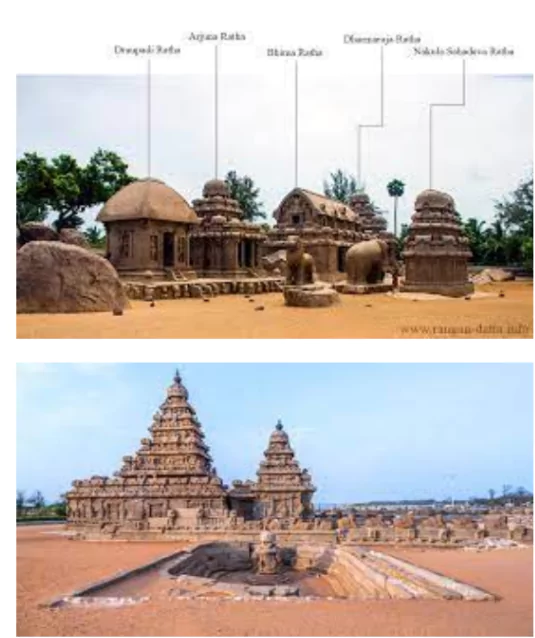![]() April 18, 2024
April 18, 2024
![]() 7493
7493
![]() 0
0
The Pallavas (2nd century AD, Andhra region), migrated south to Tamil Nadu, leaving a significant architectural legacy.
The temple architecture in South India began under the Pallava rulers and can be classified into 4 stages:

Mahabalipuram [UPSC 2014, 2015, 2016]
Important monuments at Mahabalipuram:
Varahamandapa Cave: It is behind the Arjuna’s Penance having the following features:
|
|
Must Read |
|
| Current Affairs | Editorial Analysis |
| Upsc Notes | Upsc Blogs |
| NCERT Notes | Free Main Answer Writing |
<div class="new-fform">
</div>
Latest Comments